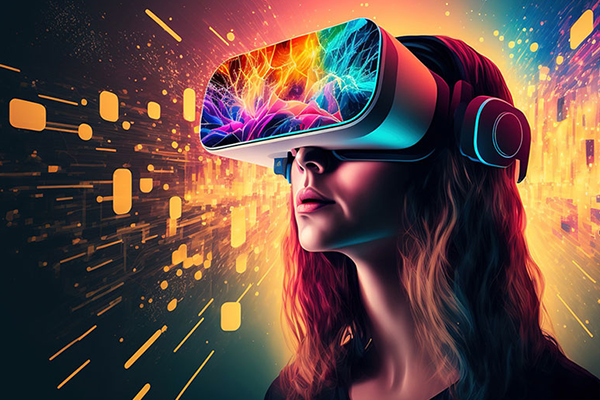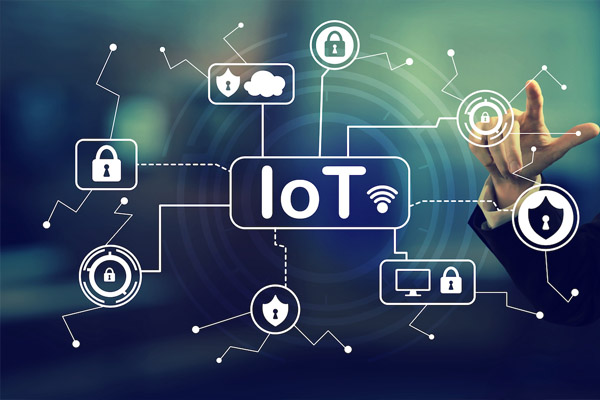close

130 Views - 04/07/2023
 10 best IoT Industry 4.0 use cases for manufacturing
10 best IoT Industry 4.0 use cases for manufacturing
10 best IoT Industry 4.0 use cases for manufacturing
Organizations in business sector 4.0 face constant demands to be faster, sharper and more efficient.
 10 best IoT Industry 4.0 use cases for manufacturing
10 best IoT Industry 4.0 use cases for manufacturing
IoT (Internet of Things) has proven transformative for organizations across all potential sectors. When done correctly, it can smoothen processes, further develop navigation, and create more incentives for partners, accomplices, and customers. No big surprise, that's the main real thrust behind Industry 4.0 - what's been described as the "fourth modern" unrest.
What is Industry 4.0?
Industry 4.0 refers to the process of changing computers in assembly/creation and related projects to create more value. Many consider the ongoing advanced change pattern to closely resemble the fourth modern volatility, hence the name.
Industry 4.0 worries about how assembly might change, using external stage advancements, evolving gas pedals and IT/OT (functional innovation). This means integrating modern innovations across network protection, massive information, AR/VR, distributed computing, robotics, AI and IoT, to carefully change the cycle and traditional capabilities kidney. The goal is to make organizations brighter and faster as well as stronger and coordinated.
Top 10 Industry 4.0 IoT Applications
Here are a few of the top Industry 4.0 use cases for IoT innovation:
1. Bigdata and Analytics
According to the way things are going, manufacturing organizations until now create extensive information measures. This can come from IoT sensors, generation volume, transaction guesswork, execution information, and more. They also need to manage a range of external data of interest and factors, for example, the economic situation, government issues, the environment, etc.
The way things are going, manufacturing organizations until now create measures of information flooding. This can come from IoT sensors, generation volumes, transaction metrics, execution information, and more. They also need to manage a range of external data of interest and factors, for example, the economic situation, government issues, the environment, etc.
Even so, problems often arise with regard to actually storing, processing and using such information.
Physically gathering, sorting, and filtering information, as well as assembling bits of knowledge, is, in general, a tedious and arduous cycle. More terrible, it is the abuse of human potential thinking about how efficient and capable innovation can be in taking care of huge information. Big Data and Analytics engines are changing this aspect of business operations into one that happens fundamentally gradually and with infinitely expanded insight applied.
2. Autonomous Robotics
While in any case we can get away with humanoid robots, with human-like insight and abilities, the production of robotics is a marvel. Advanced mechanics are now widely dispatched to perform high-precision, odd jobs in a range of innovative lines. The potential advantages of advanced robotics mechanics in assembly are very broad:
• Working with creativity non-stop with limited vacation
• Minimize work-related injuries from unsafe exercises
• Further develop proficiency and efficiency through rapid and independent orientation
The advanced mechanism that is further developed today does not need a human administrator. They are self-exploring as well as organized and adventurous through a rapidly expanding number of commitments and a wide range of engagements.
3. Simulations.and Digital Twins
A computerized twin is a programmed experience or model of a genuine item, like an assembly of hardware or an entire office. The most widely recognized use example of these frameworks is running clones to distinguish the shortcomings and great open doors for development.
They can also be used to run preventive tests on how a frame or machine will perform under obvious conditions. Likewise, workers can be prepared and taught to use hardware before being placed in a real situation. This can be particularly successful when combined with AI and AI innovations.
4. Horizontal and Vertical System Integration
Even the combination ensures that your apparatus, IoT devices, cycles and labor, cooperate perfectly. Then again, vertical reconciliation ensures this innovative information is accessible and noticeable by different offices throughout the enterprise.
The ultimate goal is to lay out the network of consistency and permeability across the association for the individuals who need it. Information must be accessible and shared between machines, workers, and even production networks or peers.
For example, this type of connection can support delay availability in a production network. Or on the other hand for deals that come with choices from your assembly implementation point of view.
5. Industrial IoT
In assembly settings, IIoT is most often connected to utility sensors that collect functional and natural information. These sensors are essential input sources of information used to illuminate various verticals and pursue innovation selection and fabrication cycles. Besides your assembly hardware, it can also apply to your office frames, e.g. air screening, HVAC, etc. This constant categorization and sharing of information supports practically any remaining IoT framework.
6. Cyber Security Technology
Probably the main significant downside to IoT - fly your entire effort is that the more interconnected your frameworks are, the bigger the potential security gambles. Any single IoT utility can be a potential entry point for an attack, from where it can quickly spread to any remaining widgets and frameworks within the business stack. your.
However, this opportunity can be reduced by using modern IoT network security frameworks. Current IoT security frameworks leverage advances in, for example, AI, AI, and blockchain, to respond to attacks naturally. These security-wise frameworks can protect against a wide range of attacks, from social engineering to ransomware to DDoS.
Parts of an IoT organization can be isolated and cleaned up without cutting down on the entire framework. Likewise, tailored designs and access control can further develop all-in-all security.
7. The Cloud
The cloud comes with a guarantee of unprecedented adaptability, adaptability and speed for organizations across all businesses. A humble, secure, fast and pre-ordered cloud platform with information redundancy and business advancement measures.
Endeavors can rethink the obvious needs and business cycles for the cloud, whether SaaS, CaaS, IaaS or XaaS. Cloud manufacturing has even arisen to synchronize crafting across geographically dispersed areas.
Information can be stashed away for almost large sums of money, with simple and quick access for all partners, including customers. The cloud offers a variety of advantages from a buyer's head-to-head perspective in regards to speed, accessibility, and solid quality. Simultaneously reduce overhead costs while acquiring, keeping up and working platforms.
8. Additive Manufacturing
AM is the modern creative name for 3D printing. 3D printing itself is the most common way to assemble items by adding more material in layers. A help planning PC (CAD) or 3D article scanner can be used to create computer models of items, which can then be printed in 3D.
This opens up multiple entrances for producers including publicly supporting customer-generated plans, thoughts, and content. Indeed, even AI can be combined with vast amounts of information to create AI-generated advances or developments.
9. Artificial intelligence and production
We have previously implied several purposes for AI in modern IoT. Most would agree that AI will certainly overwhelm quite a few innovations on computers because of its true capabilities in terms of speed, proficiency, and mechanization.
Now it is seeing huge use in setting expectations regarding advertisements, offers and requests and even maintenance.
Powered by big information and AI, the capabilities of AI will only increase. For example, machines can be equipped to autonomously recognize and address the shortcomings of human information.
10. Augmented reality and virtual reality
AR and VR may have had their fair share of bad luck because of the misalignment between assumptions and reality. Yet again, as it could be, it is currently leisurely making strides as a groundbreaking all-vector innovation.
AR overlay can provide ground-based moment recognition with rich relevant information. For example, it's not hard to visualize AR focal points delivering data on individual packages as a story admin strolls through the distribution center. Someone wearing an AR device can actually receive moment warnings, tooltips, or hazardous materials advice.
Both AR and VR can also be used to prepare for live, streamlined entertainment - potentially synergistic with advanced twins.
Can it be said that you are ramping up for Industry IoT 4.0 and how can it help your business?
That means quite a bit to note that this innovation is not exclusive to the use of Big Enterprises; In addition, there are many use cases for small and medium businesses. In any case, while the savvy industry base ideal is more feasible than at any other time in recent memory, you should never go into an unequipped computer change.
In case you haven't tried this type of activity before, it's a good idea to chat with a supervised IT guru, with a history of helping small and medium businesses make reasonable progress through desktop change. . Alternatively, you can make it go while at the same time staying away from any of the most widely recognized bottlenecks, like lack of methodology or basic IT capabilities.
What is Industry 4.0?
Industry 4.0 refers to the process of changing computers in assembly/creation and related projects to create more value. Many consider the ongoing advanced change pattern to closely resemble the fourth modern volatility, hence the name.
Industry 4.0 worries about how assembly might change, using external stage advancements, evolving gas pedals and IT/OT (functional innovation). This means integrating modern innovations across network protection, massive information, AR/VR, distributed computing, robotics, AI and IoT, to carefully change the cycle and traditional capabilities kidney. The goal is to make organizations brighter and faster as well as stronger and coordinated.
Top 10 Industry 4.0 IoT Applications
Here are a few of the top Industry 4.0 use cases for IoT innovation:
1. Bigdata and Analytics
According to the way things are going, manufacturing organizations until now create extensive information measures. This can come from IoT sensors, generation volume, transaction guesswork, execution information, and more. They also need to manage a range of external data of interest and factors, for example, the economic situation, government issues, the environment, etc.
The way things are going, manufacturing organizations until now create measures of information flooding. This can come from IoT sensors, generation volumes, transaction metrics, execution information, and more. They also need to manage a range of external data of interest and factors, for example, the economic situation, government issues, the environment, etc.
Even so, problems often arise with regard to actually storing, processing and using such information.
Physically gathering, sorting, and filtering information, as well as assembling bits of knowledge, is, in general, a tedious and arduous cycle. More terrible, it is the abuse of human potential thinking about how efficient and capable innovation can be in taking care of huge information. Big Data and Analytics engines are changing this aspect of business operations into one that happens fundamentally gradually and with infinitely expanded insight applied.
2. Autonomous Robotics
While in any case we can get away with humanoid robots, with human-like insight and abilities, the production of robotics is a marvel. Advanced mechanics are now widely dispatched to perform high-precision, odd jobs in a range of innovative lines. The potential advantages of advanced robotics mechanics in assembly are very broad:
• Working with creativity non-stop with limited vacation
• Minimize work-related injuries from unsafe exercises
• Further develop proficiency and efficiency through rapid and independent orientation
The advanced mechanism that is further developed today does not need a human administrator. They are self-exploring as well as organized and adventurous through a rapidly expanding number of commitments and a wide range of engagements.
3. Simulations.and Digital Twins
A computerized twin is a programmed experience or model of a genuine item, like an assembly of hardware or an entire office. The most widely recognized use example of these frameworks is running clones to distinguish the shortcomings and great open doors for development.
They can also be used to run preventive tests on how a frame or machine will perform under obvious conditions. Likewise, workers can be prepared and taught to use hardware before being placed in a real situation. This can be particularly successful when combined with AI and AI innovations.
4. Horizontal and Vertical System Integration
Even the combination ensures that your apparatus, IoT devices, cycles and labor, cooperate perfectly. Then again, vertical reconciliation ensures this innovative information is accessible and noticeable by different offices throughout the enterprise.
The ultimate goal is to lay out the network of consistency and permeability across the association for the individuals who need it. Information must be accessible and shared between machines, workers, and even production networks or peers.
For example, this type of connection can support delay availability in a production network. Or on the other hand for deals that come with choices from your assembly implementation point of view.
5. Industrial IoT
In assembly settings, IIoT is most often connected to utility sensors that collect functional and natural information. These sensors are essential input sources of information used to illuminate various verticals and pursue innovation selection and fabrication cycles. Besides your assembly hardware, it can also apply to your office frames, e.g. air screening, HVAC, etc. This constant categorization and sharing of information supports practically any remaining IoT framework.
6. Cyber Security Technology
Probably the main significant downside to IoT - fly your entire effort is that the more interconnected your frameworks are, the bigger the potential security gambles. Any single IoT utility can be a potential entry point for an attack, from where it can quickly spread to any remaining widgets and frameworks within the business stack. your.
However, this opportunity can be reduced by using modern IoT network security frameworks. Current IoT security frameworks leverage advances in, for example, AI, AI, and blockchain, to respond to attacks naturally. These security-wise frameworks can protect against a wide range of attacks, from social engineering to ransomware to DDoS.
Parts of an IoT organization can be isolated and cleaned up without cutting down on the entire framework. Likewise, tailored designs and access control can further develop all-in-all security.
7. The Cloud
The cloud comes with a guarantee of unprecedented adaptability, adaptability and speed for organizations across all businesses. A humble, secure, fast and pre-ordered cloud platform with information redundancy and business advancement measures.
Endeavors can rethink the obvious needs and business cycles for the cloud, whether SaaS, CaaS, IaaS or XaaS. Cloud manufacturing has even arisen to synchronize crafting across geographically dispersed areas.
Information can be stashed away for almost large sums of money, with simple and quick access for all partners, including customers. The cloud offers a variety of advantages from a buyer's head-to-head perspective in regards to speed, accessibility, and solid quality. Simultaneously reduce overhead costs while acquiring, keeping up and working platforms.
8. Additive Manufacturing
AM is the modern creative name for 3D printing. 3D printing itself is the most common way to assemble items by adding more material in layers. A help planning PC (CAD) or 3D article scanner can be used to create computer models of items, which can then be printed in 3D.
This opens up multiple entrances for producers including publicly supporting customer-generated plans, thoughts, and content. Indeed, even AI can be combined with vast amounts of information to create AI-generated advances or developments.
9. Artificial intelligence and production
We have previously implied several purposes for AI in modern IoT. Most would agree that AI will certainly overwhelm quite a few innovations on computers because of its true capabilities in terms of speed, proficiency, and mechanization.
Now it is seeing huge use in setting expectations regarding advertisements, offers and requests and even maintenance.
Powered by big information and AI, the capabilities of AI will only increase. For example, machines can be equipped to autonomously recognize and address the shortcomings of human information.
10. Augmented reality and virtual reality
AR and VR may have had their fair share of bad luck because of the misalignment between assumptions and reality. Yet again, as it could be, it is currently leisurely making strides as a groundbreaking all-vector innovation.
AR overlay can provide ground-based moment recognition with rich relevant information. For example, it's not hard to visualize AR focal points delivering data on individual packages as a story admin strolls through the distribution center. Someone wearing an AR device can actually receive moment warnings, tooltips, or hazardous materials advice.
Both AR and VR can also be used to prepare for live, streamlined entertainment - potentially synergistic with advanced twins.
Can it be said that you are ramping up for Industry IoT 4.0 and how can it help your business?
That means quite a bit to note that this innovation is not exclusive to the use of Big Enterprises; In addition, there are many use cases for small and medium businesses. In any case, while the savvy industry base ideal is more feasible than at any other time in recent memory, you should never go into an unequipped computer change.
In case you haven't tried this type of activity before, it's a good idea to chat with a supervised IT guru, with a history of helping small and medium businesses make reasonable progress through desktop change. . Alternatively, you can make it go while at the same time staying away from any of the most widely recognized bottlenecks, like lack of methodology or basic IT capabilities.
Most Viewed

Application and impact of information technology in health care
484 Views - 04/07/2023

Apple is serious about Industry 4.0
465 Views - 04/07/2023

Apple is serious about Industry 4.0
465 Views - 04/07/2023

IT Execs shares a strategy for managing digital and cyber trends in 2023
392 Views - 04/07/2023

IT Execs shares a strategy for managing digital and cyber trends in 2023
392 Views - 04/07/2023

The smart home jury has yet to make a point, AI can help
391 Views - 04/07/2023
# Tag
News in the same category

10 best IoT Industry 4.0 use cases for manufacturing
131 Views - 04/07/2023

Application and impact of information technology in health care
484 Views - 04/07/2023

4 Stages of information technology application in business
226 Views - 04/07/2023

The Internet of Things (IoT) is transforming the world around us. It is changing products, business processes - even the way businesses interact with their customers.
155 Views - 04/07/2023



























